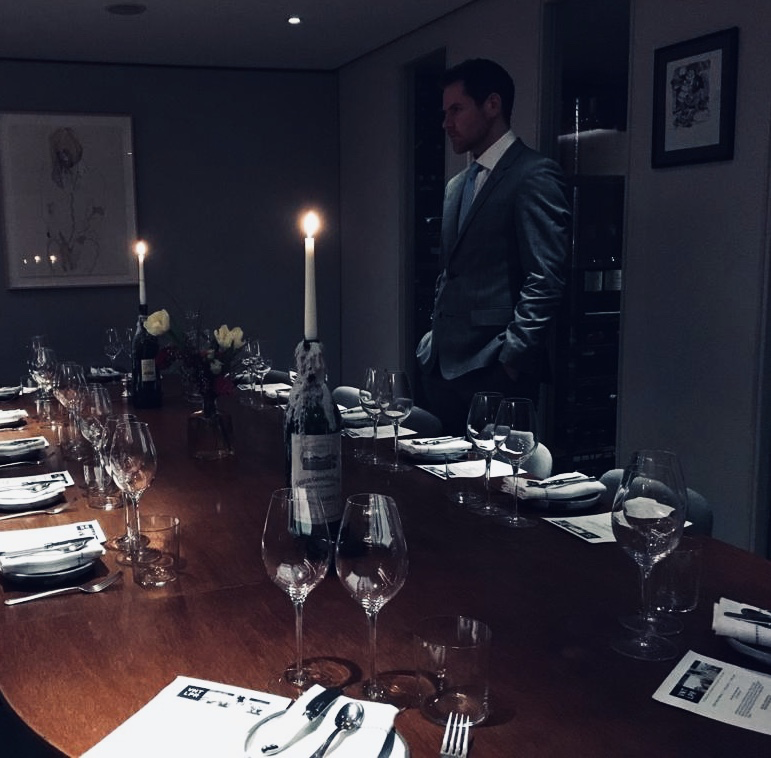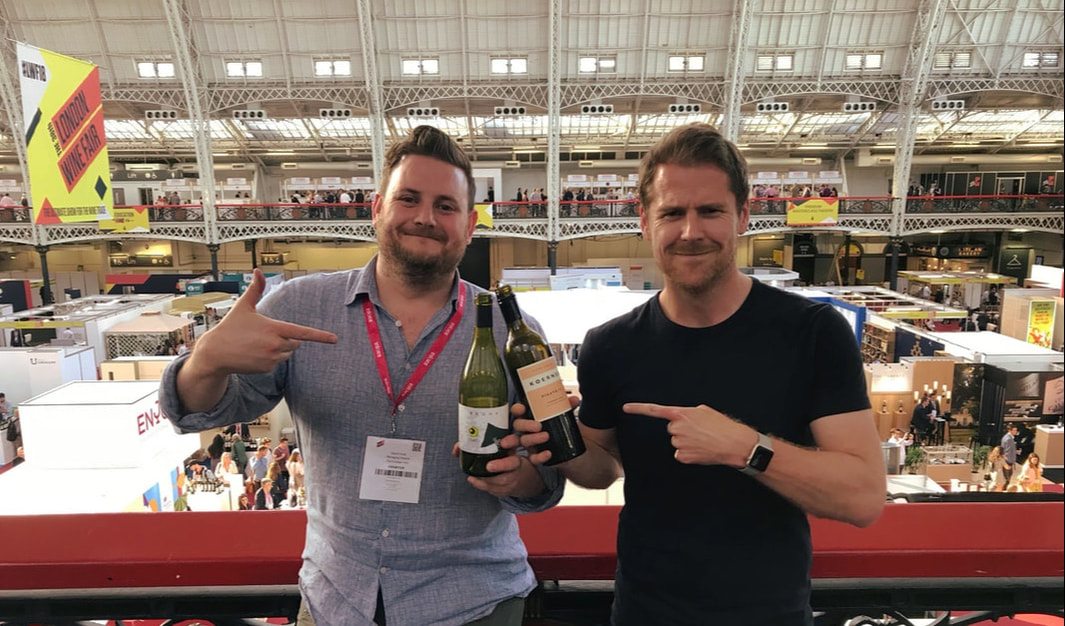|
On Tuesday, 28th January we hosted a very special dinner at Portland restaurant in London, raising $5,500 for the Adelaide Hills Wine Region Fire Appeal. This was just one of many fundraising events featuring Australian wines that have taken place across the UK in January in an overwhelming show of support for Australian winegrowers whose livelihoods have been affected by the devastating bushfires. The focus of the dinner was a select back catalogue of Vinteloper wines dating back to the 2012 vintage, a few bottles of which had been held back by Red Squirrel / Graft and in good storage conditions. It's a rare thing finding older bottles from some of the smaller, newer Australian producers, unless from their own museum stocks. The wines are made in small quantities, sell out quickly and are drunk quickly. One could argue that many of these wines, however much they're made in a forward-drinking style, are being drunk too young. This dinner showed them in the fullness of life, improved after a few years in bottle, and with plenty of road to travel for them yet. R/14 Watervale Riesling 2014 David's Rieslings from Watervale in the Clare Valley have been historically high-acid confrontations, certainly in the earlier days. There used to be two styles of Vinteloper Riesling - R/1 and R/2, dry and off-dry - but the sweeter style was discontinued some years ago. Vintage by vintage, the trend was towards a softer style, so it was interesting to compare this 2014 with the subsequent 2015 vintage several years down the road, having been sold out for yonks, now that the acid profile has had time to chill out. You can tell these Rieslings have always been drunk a bit too young because this is in a magnificent place now,. The acid is still prominent but mellowed, and fruit flavours ripe. R/15 Watervale Riesling 2015 There was plenty of enthusiasm for the 2015 vintage in the Clare Valley and you can see why. This is brilliantly balanced, the superior of the two and despite its being a year younger, already feels more roundly developed than the 2014. Urban Winery Project #4 The Urban Winery Project is an annual event David began in Adelaide and has toured around Australia, taking over empty spaces, installing basic winemaking equipment, inviting a top chef to cook dinner, and bringing together a heap of wine lovers to dance, drink, eat and make wine together. Each wine has a new unique label drawn by a prominent artist and has the name of a participant imprinted on the label. So somewhere in the world is a bottle with your name on it. Literally. The red is usually Shiraz based. Here in 2016 it was about 70% Shiraz and the rest Malbec, mostly from Heathcote in Victoria but a little bit of Shiraz came from Langhorne Creek in South Australia. Most of the wine was made by two hundred punters in a warehouse in Northcote, Melbourne, with a smaller amount in Adelaide. Winemaking is entirely natural, the wine raised in old French oak barrels for nearly a year and released at the subsequent Urban Winery Project. This is still an amazing wine, probably my favourite ever in the series. Umami rich, still with some of that BBQ smoke and tomato leaf I remember so clearly when first trying it. Just a couple of thousand bottles. Urban Winery Project #6 Made in a pop-up winery at Three Blue Ducks Rosebery in Sydney in March 2017 by David and three hundred one-time winemakers. The jump in numbers from #4 in 2016 to #6 this vintage is because #5 was also made in 2017 but only for Sydney. This is 52% Shiraz and 48% Tempranillo from the Adelaide Hills and Riverland but that’s not really what matters - it’s how it makes you feel. True to form it is silky smooth, harmonious and crowd-pleasing. Around 2,500 bottles produced. PN/15 Adelaide Hills Pinot Noir 2015 Also an Adelaide Hills vintage affected by bushfires, but on a much smaller scale, this was the Pinot Noir that propelled Vinteloper to the People’s Choice Award at the 2016 Pinot Palooza events - massive parties celebrating Pinot Noir across major cities in Australia and NZ, thousands of revellers drinking the finest Pinots from those two nations and voting for their favourite. This was it. Grapes were mostly from a 440-metres high vineyard in Norton Summit planted to clone D5V12 in 1990. But there was no Odeon Pinot Noir - David’s top wine - made in 2015 because it wasn’t felt the quality was quite Odeon level. So some grapes from that legendary Lenswood vineyard were ‘declassified’ and appeared here. Crushed by hand and foot, as is the normal practice, naturally fermented on skins for 7-10 days with one-third as whole bunches, then matured in French oak (one-third new) for nearly a year. Unfined & unfiltered, also normal practice for David’s Pinot Noir. It was a close-run thing at the dinner as to which was the favourite Pinot Noir out of the 2015 and 2016. For my part, I’d plump for the 2015. It’s obviously showing more tertiary, with satisfyingly classy sous-bois notes, and feels that bit more restrained than the more fruit-forward 2016. Both are magnificent but demonstrate divergent styles, a sign of the vintage variability you get in the relatively cool-climate Adelaide Hills. PN/16 Adelaide Hills Pinot Noir 2016 Hot & dry vintage in contrast to 2015, and a very early harvest across South Australia. This is from the same Norton Summit vineyard as above, picking finished by hand on 26th February. Winemaking is essentially the same as 2015 but with 12 days of natural fermentation on skins. The 2016 won many fans at the dinner. Indeed it was probably the favourite judging by mood around the table, and it’s easy to see why. The fruit is riper, more rounded, more ‘Aussie’. There’s a refreshing minty edge to it but the overriding flavour is of complex layers of cherries, plums and red berries, with subtle spicy notes of cinnamon, some herbs like thyme. It’s a lovely, lovely wine. If I had the two in my cellar - and fortunately I do! - then I’d be holding on to the 2015 for another few years and enjoying this now. SH/12 McLaren Vale Shiraz 2012 A relatively low-yielding but high quality vintage in 2012 and this is a bit of a museum piece. Historically David made Shiraz out of McLaren Vale, just south of Adelaide and considered the birthplace of South Australian wine. It’s a patchwork of terroirs, almost Burgundian in that respect, with significant maritime influence. But this was the penultimate vintage for his McLaren Vale Shiraz - and the last exported to the UK - before switching to the cooler climes of the Adelaide Hills. Just 1,800 bottles produced, more or less. It’s from a vineyard in Willunga, farmed organically by the D’Aloia family. Naturally fermented and matured for 18 months in French oak (around 15% new). This is not a shy wine in any respects, clocking in at 15.5% alcohol but carrying it well. Inferior high-alcohol reds can with a bit of age begin to lose primary fruit and leave you with out-of-kilter alcohol burn. This doesn’t. You feel its presence for sure but that big ripe black fruit flavour that I remember so well is still there, alongside those classic black pepper, sweet spice and dark chocolate notes. It’s a wine that’s really repaid a few years in bottle. Imposingly marvellous. SH/14 Adelaide Hills Shiraz 2014 My favourite of the two Shirazes without a shadow of a doubt, but this betrays my preference for a lighter, more peppery style. One of my desert island wines has to be Northern Rhône valley Syrah and modern styles from the Adelaide Hills have one foot in that Old World camp. It is partly behind the decision for Vinteloper to source Shiraz from the Hills in the first place. The first year for Vinteloper Adelaide Hills Shiraz was a year of extremes, with frost at the start of the vintage and heatwaves throughout, meaning low yields. A tricky vintage but conscientious growers and winemakers can often achieve the greatest results in such years. The grapes were farmed by Philip Boyd-Turner in his Glengrove vineyard in the Kangarilla hills. Naturally fermented and matured in French oak barrels (25% new) for 18 months. This was quite the debut because a few years later it was rated among stiff competition (a field of more than 150 wines) as the very best Australian Shiraz by Decanter magazine with 98 points, an amazing result. I just adore this wine and it is getting better and better. If you still have any tucked away you’re very lucky. Smokey, gamey, peppery and bright, it has absolutely everything you’re looking for in prime Aussie Shiraz and more. A fitting finale.
|
Archives
June 2023
Categories
All
|




